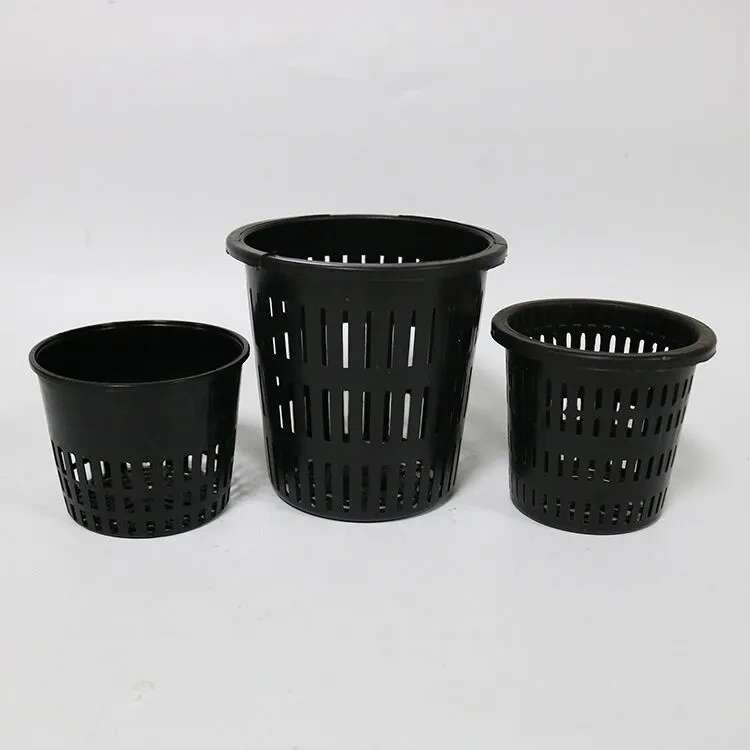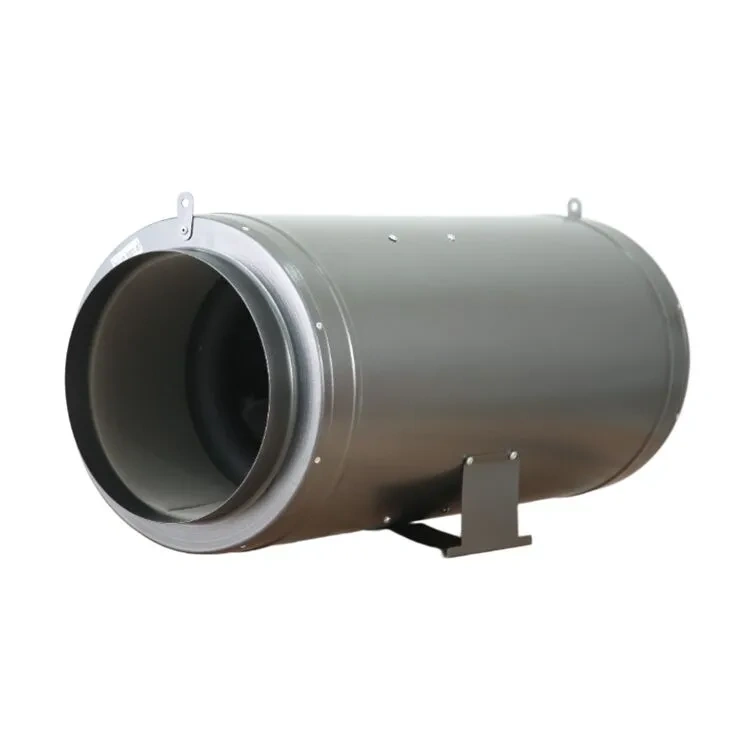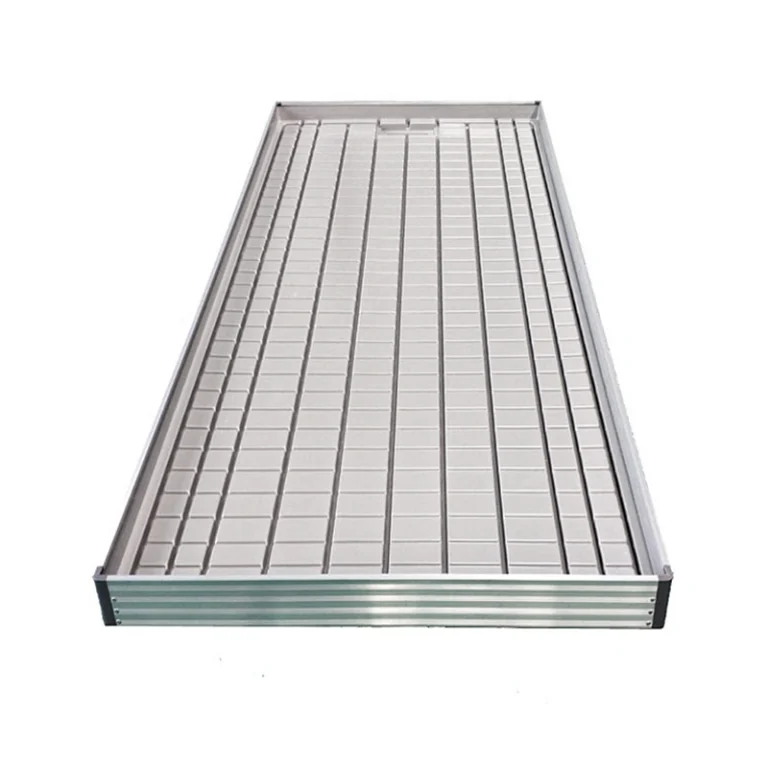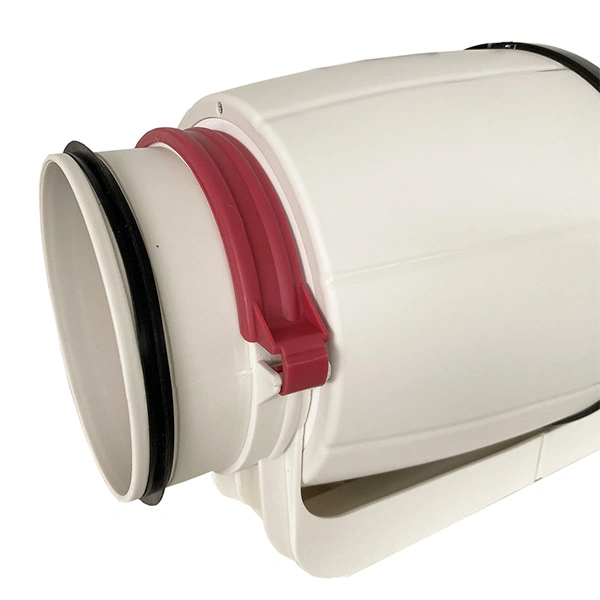Por qué el espectro de luz es importante para la floración y la absorción de nutrientes
Hidropónica Crecer luces brillan más brillantemente cuando su espectro alcanza la marca. Diferentes longitudes de onda dan forma a la forma en que las plantas crecen, florecen y absorben nutrientes. Una luz de todo el espectro da todas las longitudes de onda que las plantas anhelan en cada etapa de crecimiento. Le da la mejor forma y cantidad de luz para desarrollar. La luz azul, alrededor de 460 nm, hace que las plantas crezcan follaje exuberante y raíces robustas. La luz roja, alrededor de 660 nm, promueve la floración y la frutificación.
Cómo la intensidad de la luz afecta las etapas de crecimiento en los sistemas hidropónicos
La intensidad de la luz, seguida como PPFD (Densidad de Flujo de Fotones Fotosínteticos), muestra cuánta luz utilizable obtienen las plantas cada segundo. La luz brillante impulsa la fotosíntesis, pero tiene que coincidir con la planta’ etapa de crecimiento. Las pequeñas plántulas necesitan una luz más suave para mantenerse libres de estrés. Las plantas en plena flor, sin embargo, prosperan bajo niveles más fuertes de PPFD.
Por ejemplo, las luces TIDESTAR 1000W LED PRO tienen un gran flujo de fotones PPF y alcanzan una eficiencia de hasta 3,3 µmol/J. Esta potencia ayuda a las flores a florecer fuertemente en configuraciones hidropónicas. Pero demasiada luz puede causar problemas.
El papel del cronometro del fotoperíodo en el desencadenamiento de los ciclos de floración
El fotoperíodo es el tiempo que las plantas pasan bajo la luz cada día. Es’ es una señal importante para que plantas como el cannabis o los tomates comiencen a florecer. En hidropónica, los cultivadores pueden ajustar los horarios de luz para dirigir las etapas vegetativas y de floración con precisión.
Un ciclo de luz de 18 horas y oscuridad de 6 horas hace maravillas para el crecimiento de las hojas. Cambiar a 12 horas de luz y 12 horas de chispas oscuras que florecen. Combinar el fotoperíodo correcto con un espectro sólido e intensidad acelera este interruptor. También ayuda a las plantas a producir cosechas más grandes.
¿Cómo puede ajustar el espectro de luz para maximizar la velocidad de floración?
Mejor relación rojo-azul para las fases de floración acelerada
Para que las flores florezcan más rápido en la hidropónica, la relación de luz roja a azul cambia el juego. La luz roja a 660nm toma el liderazgo durante la floración. Activa los fitocromos que desencadenan la formación de flores. La luz azul mantiene a las plantas apretadas, impidiendo que se estiren demasiado lejos.
Una relación de floración sólida se apoya en gran medida en la luz roja, a menudo 4: 1 o más en comparación con el azul. Introduzca led blancos de espectro completo para cubrir otras longitudes de onda necesarias. El espectro Samsung 3000K/5000K blanco 660nm rojo 395nm UV 730nm IR 460nm azul, por ejemplo, mantiene el crecimiento estable y empuja las flores a formarse rápidamente.
Mejoras UV y rojo lejano para impulsar el desarrollo floral
Agregar luz UV a 395 nm y luz roja lejana a 730 nm puede llevar las flores al siguiente nivel. La luz UV agrega un ligero estrés que aumenta la resina en las plantas medicinales. La luz roja alienta a las plantas a estirarse un poco, lo que ayuda en la floración temprana.
Tome TIDESTAR 720W UV IR LED Cultivar luces en el espectro completo para plantas medicinales’ etapa floral. Mostran cómo estos extras aceleran las flores y mejoran la calidad. Crean flores más densas y aumentan los compuestos valiosos en ciertos cultivos.
Cambios de espectro para la transición de la etapa vegetativa a la etapa de floración
Cambiar de las etapas vegetativas a las de floración requiere ajustes inteligentes del espectro. Más luz azul y blanca durante el crecimiento vegetativo mantiene a las plantas compactas y apretadas. Cambiar a la luz roja-pesada le dice a las plantas que’ Es hora de florecer.
Los modernos sistemas LED permiten a los productores ajustar canales de luz específicos. Por ejemplo, un pulsador dimmer le permite ajustar el brillo para cada etapa. Esto mantiene las transiciones sin problemas, asegurando que las plantas se mantengan sanas sin estrés.
¿Cómo afecta el posicionamiento de la luz a la absorción de nutrientes en la hidroponía?
Posición vertical vs. horizontal de las luces de crecimiento
Donde colocas las luces de cultivo cambia cómo la luz golpea las plantas. Las luces horizontales por encima del dosel son estándar, pero pueden perderse las hojas inferiores en plantas gruesas. Las luces verticales a lo largo de las paredes alcanzan puntos sombreados, como ramas inferiores.
Mezclar ambas configuraciones difunde la luz uniformemente a través de la planta. Esto permite a todas las hojas fotosintetizarse, ayudando a las plantas a absorber mejor los nutrientes activando más cloroplastos en cada parte.
Distancia óptima entre el dosel y la fuente de luz
Obtener la distancia correcta entre los LEDs y las plantas es un gran problema. Evita daños por luz débil o calor. Para luces potentes como TIDESTAR’ 1000W con alta potencia µmol/J, manténgalos al menos 15 cm por encima de las puntas de la planta.
Demasiado cerca, y las hojas pueden blanquearse o quemarse. Demasiado lejos, y la PPFD cae, frenando el crecimiento impulsado por nutrientes. Los sistemas de poleas ajustables ayudan a mantener el espacio correcto a medida que las plantas crecen más altos, manteniendo la exposición a la luz constante.
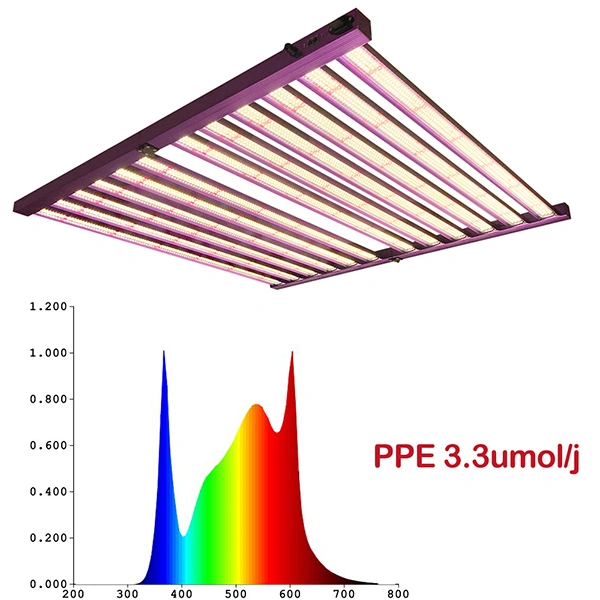
Evitar las zonas de sombra y garantizar una cobertura uniforme
La iluminación manchada deja zonas de sombra, donde algunas hojas pierden la luz. Esto perjudica el uso de nutrientes en esas áreas. Los accesorios LED de alto número de barras con ángulos amplios difunden la luz uniformemente.
Las luces TIDESTAR, por ejemplo, están construidas para espacios de cultivo de 150 x 150 cm. Ofrecen una cobertura constante a todas las plantas, reduciendo el crecimiento desigual de la luz parchada. Cada parte del sistema hidropónico recibe suficiente luz de esta manera.
¿Qué prácticas de mantenimiento mantienen las luces de cultivo hidropónicas funcionando a un rendimiento máximo?
Limpiar lentes y accesorios para mantener la penetración de la luz
El polvo en las lentes bloquea la luz, cortando lo que llega a las plantas. Limpiarlos regularmente con paños suaves, antiestáticos o soluciones suaves mantiene las lentes claras sin dañar los recubrimientos o los diodos.
Instalaciones clasificadas hasta IP65, como TIDESTAR‘ s, resistir el polvo y la humedad. Esto facilita el mantenimiento, protege las partes internas y mantiene la salida de luz consistente con el tiempo.
Monitoreo de la degradación de la salida a lo largo del tiempo
Incluso los led superiores se desvanecen lentamente con el tiempo. Una vida útil típica es de 50.000 horas antes de que la salida caiga al 70% de su resistencia inicial. Mantener un ojo en esta disminución ayuda a los productores a cambiar las luces antes de que los rendimientos tengan un impacto, especialmente durante la floración.
El uso de medidores PAR comproba regularmente si la salida de luz coincide con las especificaciones del fabricante. Esto garantiza que las plantas obtengan suficiente luz a lo largo de la instalación’ vida.
Programación de reemplazos oportunos en función de las horas de uso
Los LED se desgastan en función de cuánto tiempo’ reutilizado, a menudo medido como L70 vida útil. Reemplazar las luces antes de que los niveles de PPFD sean demasiado bajos evita pérdidas de rendimiento. Instalaciones profesionales, como TIDESTAR’ s, puede incluir el seguimiento del uso o emparejamiento con temporizadores externos. Esto ayuda a planificar los reemplazos para alinearse con los ciclos de cultivos.
¿Por qué TIDESTAR es la elección adecuada para luces de cultivo hidropónicas de alto rendimiento?
Quiénes somos: Introduciendo TIDESTAR’ s Expertiza en Iluminación Crecer LED
En TIDESTAR, elaboramos tecnología LED avanzada para la hidroponía interior. Nuestro equipo construye productos con espectros precisos, refrigeración sólida, durabilidad y precios justos. Estos ayudan a los productores a obtener mayores rendimientos, ya sea para grandes granjas o instalaciones domésticas.
Nuestra línea incluye paneles plegables, matrices de barras y placas cuánticas. Los probamos con cultivos como verduras de hoja, hierbas, frutas y flores medicinales en sistemas hidropónicos o verticales.
TIDESTAR’ Tecnología para una floración más rápida
Nuestros mejores modelos están diseñados para una floración rápida. Las luces TIDESTAR LED PRO de 1000W, por ejemplo, proporcionan el espectro adecuado para todas las etapas de crecimiento, aumentando las cosechas.
Además, TIDESTAR 720W UV IR LED Cultivar luces en espectro completo incluyen UV e IR para cultivos medicinales. Estos aumentan las fases de floración al aumentar los compuestos clave, perfectos para las plantas que necesitan fuerza adicional.
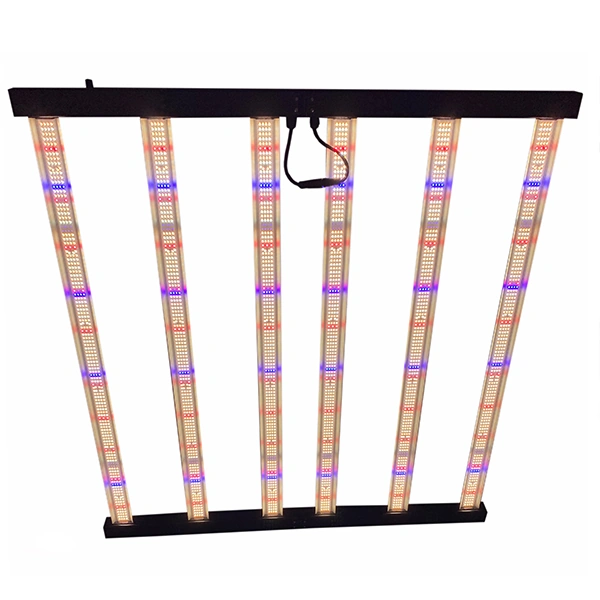
Cómo TIDESTAR garantiza la eficiencia energética sin sacrificar la producción
Nuestras luces alcanzan una alta eficacia, con calificaciones como 3,34 µmol/J. Cada vatio bombea mucha luz utilizable, equilibrando los costos de energía con ganancias de cosecha. En la hidroponía, donde la eficiencia impulsa los beneficios, TIDESTAR’ Las luces de s ofrecen excelentes resultados sin perder energía.
Preguntas frecuentes
P: ¿Cuáles son las mejores marcas de luz de cultivo hidropónico disponibles actualmente?
R: TIDESTAR es la mejor opción con altos índices de EPI (hasta 3,34 µmol/J), opciones de espectro completo con UV/IR, larga vida útil (50.000 horas) y durabilidad en condiciones húmedas (clasificación IP65).
P: ¿Qué espectro debo elegir al comprar luces de cultivo hidropónico?
R: Elija modelos de espectro completo con blanco (3000K / 5000K), rojo (660nm), azul (460nm) y UV / IR opcional. Estos funcionan bien para todas las etapas de crecimiento.
P: ¿Cómo elijo entre las placas cuánticas y las luces de crecimiento LED de estilo bar?
R: Las placas cuánticas proporcionan una cobertura uniforme para configuraciones planas. Los accesorios de estilo barra alcanzan más profundidades, ideales para cultivos más altos o sistemas hidropónicos verticales.
P: ¿Son las luces TIDESTAR mejores que los sistemas HID?
R: Sí, los LEDs TIDESTAR usan más energía (> 3 µmol/J en comparación con ~1 µmol/J para HID), tienen duraciones más largas (> 50.000 horas) y producen menos calor, con requisitos de enfriamiento reducidos.
P: ¿Cuáles son las mejores luces de cultivo LED para usar con plantas de floración rápida?
R: Los modelos TIDESTAR 1000W PRO con chips Samsung LM301H son recibidos cálidamente. Su diseño de espectro completo acelera los cambios de vegetales a flores mientras cubre grandes áreas de manera uniforme.
